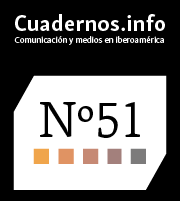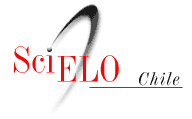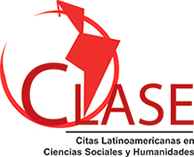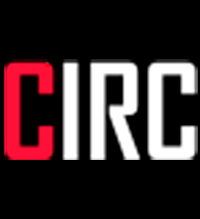Medios de prensa digitales en Chile: influencia del editor y de la audiencia en la reunión de pauta
DOI:
https://doi.org/10.7764/cdi.51.29645Palabras clave:
medios digitales, rutinas periodísticas, editor, pauta, audienciaResumen
Esta investigación explora la evolución de la rutina periodística de la pauta en los medios digitales en Chile en los últimos años. Se examina específicamente cómo se elabora la pauta, el rol del editor y la influencia de la audiencia para seleccionar y jerarquizar los contenidos. Se contempló una muestra de los diez medios digitales más leídos en Chile en 2020 y se aplicaron entrevistas en profundidad a sus editores o directores. Los principales resultados apuntan a una diferenciación entre medios matriciales y medios nativos digitales. Mientras que los medios matriciales tienen una injerencia menos directa del editor sobre los periodistas y las respuestas del público afectan fuertemente la selección de contenidos, los medios nativos digitales mantienen un estilo más tradicional de elaboración de sus pautas y noticias. En estos últimos, los editores tienen mayor injerencia sobre los periodistas, las reuniones de pauta suelen hacerse una vez al día y los contenidos están poco condicionados por las métricas y las redes sociales. Aunque el estudio es una fotografía de algunos medios digitales chilenos, permite concluir que la evolución del periodismo en línea en Chile ha sido rápida, se le da mayor importancia a la pauta, se ha perfilado más la figura del editor, y la influencia de la audiencia en los contenidos es cada vez más importante respecto de unos años atrás.
Descargas
Citas
Agarwal, S. D. & Barthel, M. L. (2013). The friendly barbarians: Professional norms and work routines of online journalists in the United States. Journalism, 16(3), 376-391. https://doi.org/10.1177/1464884913511565
Alexa (2019). Top Sites in Chile. Alexa.com https://www.alexa.com/topsites/countries/CL
Anderson, C. W. (2011, October 26). Notes towards an analysis of computational journalism. HIIG Discussion Paper Series, 2012-1. https://doi.org/10.2139/ssrn.2009292
Andréu Abela, J. (2002). Las técnicas de análisis de contenido: una revisión actualizada (Content Analysis Techniques: An Updated Review). Fundación Centro de Estudios Andaluces.
BioBioChile. (2018). Especial 50 años (50-years special issue). BioBioChile.cl. https://www.biobiochile.cl/especial/50a%C3%B1os/
Boczkowski, P. (2009) Rethinking Hard and Soft News Production: From Common Ground to Divergent Paths. Journal of Communication, 59(1), 98–116. https://doi.org/10.1111/j.1460-2466.2008.01406.x
Boczkowski, P. & Peer, L. (2011). The choice gap: The divergent online news preferences of journalists and consumers. Journal of Communication, 61(5), 857-876. https://doi.org/10.1111/j.1460-2466.2011.01582.x
Boczkowski, P. & Santos, M. (2007). When More Media Equals Less News: Patterns of Content Homogenization in Argentina’s Leading Print and Online Newspapers. Political Communication, 24(2), 167–180. https://doi.org/10.1080/10584600701313025
Bucy, E. P. (2004). The interactivity paradox: closer to the news but confused. In E. P. Bucy & J. E. Newhagen (Eds.), Media access: Social and psychological dim1*ensions of new technology use (pp. 47–72). Erlbaum.
Cassidy, W. P. (2005). Variations on a Theme: The Professional Role Conceptions of Print and Online Newspaper Journalists. Journalism and Mass Communication Quarterly, 82(2), 264-280. https://doi.org/10.1177/107769900508200203
Chaffee, S. & Metzger, M. (2001). The end of mass communication. Mass Communications and Society, 4(4), 365–379. https://doi.org/10.1207/S15327825MCS0404_3
ComScore. (2019). Latest Rankings. https://www.comscore.com/lat/Prensa-y-Eventos/Market-Rankings
Craft, S., Vos. T., & Wolfgang, D. (2015). Reader Comments as Press Criticism: Implications for the Journalistic Field. Journalism, 17(6), 677-693. https://doi.org/10.1177/1464884915579332
Cooperativa. (n.d.). La Compañía. Cooperativa.cl. https://www.cooperativa.cl/noticias/site/edic/base/port/home_modulo_informacion_corporativa.html?1
Diario Financiero. (n.d.). Quiénes somos (Who are we?). df.cl. https://www.df.cl/noticias/quienes-somos/2018-09-20/114714.html
Domingo, D. (2008). Interactivity in the Daily Routines of Online Newsrooms: Dealing with an Uncomfortable Myth. Journal of Computer-Mediated Communication, 13(3), 680–704. https://doi.org/10.1111/j.1083-6101.2008.00415.x
Doval-Avendaño, M. & Algarra, M. (2021). Periodismo y tecnología, tendencias de investigación y propuestas (Journalism and technology, research trends and proposals). Estudios sobre el mensaje periodístico, 27(2), 463-480. https://doi.org/10.5209/esmp.71073
Duffy, A. (2019). Out of the shadows: the editor as a defining characteristic of journalism. Journalism, 22(3), 634-649. https://doi.org/10.1177/1464884919826818
Eisenhardt, K. (1989). Building theories from case study research. Academic Manage Review, 14(4), 532-550. https://doi.org/10.5465/amr.1989.4308385
El Dínamo. (n.d.). Política editorial (Editorial guidelines). Eldinamo.cl. https://www.eldinamo.cl/politica-editorial/
El Líbero. (n.d.). Quiénes somos (Who are we?). ellibero.cl. https://ellibero.cl/quienes-somos/
Emol. (n.d.). Términos y condiciones generales de uso (Use terms and conditions). Emol.com. https://www.emol.com/Terminos/Terminosycondiciones.aspx
El Mostrador (n.d.). Principios editoriales (Editorial line). https://media.elmostrador.cl/2010/11/PrincipiosEditoriales.pdf
Fontcuberta, M. (1999). Pauta y calidad informativa (Guidelines and information quality). Cuadernos.info, (13), 61-69. https://doi.org/10.7764/cdi.13.197
Fortunati, R. & Sarrica, M. (2011). Insights from journalists on the future of the press. Communications, 36(2), 123-146. https://doi.org/10.1515/comm.2011.007
Gans, H. (1980). Deciding What's News: A Study of CBS Evening News, NBC Nightly News, Newsweek and Time. Vintage.
Gans, H. (2003). Democracy and the News. Oxford University Press.
Greene González, F. (2016). Medios online chilenos: diferencias en algunas prácticas periodísticas respecto de los medios escritos tradicionales (Chilean online media: differences in some journalistic practices over traditional print media). Revista de Comunicación, 15, 34-47.
Greene González, F. (2017). Algunas influencias en la autonomía de los periodistas chilenos: una actualización de investigaciones previas (Some influences on the autonomy of Chilean journalists: an update of previous research). Revista de Comunicación, 16(2), 234-251. https://doi.org/10.26441/RC16.2-2017-A11
Greene-González, M. F. & Lecaros-Menéndez, M. J. (2015). El trabajo del editor y la pauta en medios online chilenos (The Work of the Editor and the Norms for Chilean Online Media). Palabra Clave, 18(2), 588-613. https://doi.org/10.5294/pacla.2015.18.2.11
Gronemeyer, M. E. (2013). La digitalización y sus efectos sobre las prácticas y productos periodísticos en Chile (Digitalization and its Effect on Journalism Products and Practices in Chile). Palabra Clave, 16(1), 101-128. https://doi.org/10.5294/pacla.2013.16.1.4
Gunther, A. C. & Liebhart, J. L. (2006). Broad reach or biased source? Decomposing the hostile media effect. Journal of Communication, 56(3), 449–466. https://doi.org/10.1111/j.1460-2466.2006.00295.x
Hamilton, J. (2004). All the news that’s fit to sell. Princeton University Press.
Henkel, I., Thurman, N., Möller, J., & Trilling, D. (2020). Do Online, Offline, and Multiplatform Journalists Differ in their Professional Principles and Practices? Findings from a Multinational Study. Journalism Studies, 21(19), 1363-1383. https://doi.org/10.1080/1461670X.2020.1749111
Hermida, A. (2011). Tweet the news: Social media streams and the practice of journalism. In S. Allan (Ed.), The Routledge companion to news and journalism (2nd ed.) (pp. 671-82). Routledge.
Hanusch, F. (2017). Web Analytics and the Functional Differentiation of Journalism Cultures: Individual, Organizational and Platform-Specific Influences on Newswork. Information, Communication and Society, 20(10), 1571–1586. https://doi.org/10.1080/1369118X.2016.1241294
Jofré, C. (2017). Journalism and news cultures: journalistic practices and online media in the Chilean newsroom. (Doctoral Dissertation, Monash University). https://doi.org/10.4225/03/58b76e231b545
Klinenberg, E. (2005). Convergence: News Production in a Digital Age. Annals of the American Academy of Political and Social Science, 597(1) 48-64.
Krippendorff, K. (2004). Content analysis: An introduction to its methodology (2nd ed.). Sage. La Tercera. (n.d.). Términos y condiciones (Use terms and conditions). Latercera.cl. https://www.latercera.com/terminos-y-condiciones/
Lecaros, M. & Greene, F. (2012). Editores chilenos y rutinas periodísticas: revisión y propuesta para un estudio sobre el cambio en la sala de redacción (Chilean Editors and Journalistic Routines: Review and Proposal Towards a Study on Change in Newsrooms). Cuadernos.info, (30), 53-60. https://doi.org/10.7764/cdi.30.426
Lee, C. S. & Ma, L. (2012). News sharing in social media: the effect of gratifications and prior experience. Computers in Human Behavior, 28(2), 331-339. https://doi.org/10.1016/j.chb.2011.10.002
Lee, A., Lewis S., & Powers, M. (2014) Audience clicks and news placement: A study of timelagged influence in online journalism. Communication Research, 41(4), 505–530. https://doi.org/10.1177/0093650212467031
Lee, E. & Tandoc, E. (2017). When News Meets the Audience: How Audience Feedback Online Affects News Production and Consumption. Human Communication Research, 43(4), 436–449. https://doi.org/10.1111/hcre.12123
Lewis, S. & Usher, N. (2013). Open Source and Journalism: Toward New Frameworks for Imagining News Innovation. Media, Culture and Society, 35(5), 602–619. https://doi.org/10.1177/0163443713485494
Lindlof, T. R. & Taylor, B. C. (2011). Sensemaking: Qualitative Data Analysis and Interpretation. Qualitative Communication Research Methods, 3(1), 241-281.
MacGregor, P. (2007) Tracking the online audience. Journalism Studies, 8(2), 280-298. https://doi.org/10.1080/14616700601148879
Mitchelstein, E. & Boczkowski, P. (2009). Between tradition and change: A review of recent research on online news production. Journalism, 10(5), 562-586. https://doi. org/10.1177/1464884909106533
Navarrete, J. M. (2000). El muestreo en la investigación cualitativa (Sampling in qualitative research). Investigaciones sociales, 4(5), 165-180. https://doi.org/10.15381/is.v4i5.6851
O’Sullivan, J. & Heinonen, A. (2008). Old values, new media: Journalism role perceptions in a changing world. Journalism Practice, 2(3), 357-371. https://doi.org/10.1080/17512780802281081
Pauta. (n.d.). Quiénes somos (Who are we?). pauta.cl. https://ellibero.cl/quienes-somos/
Pavlik, J. (2008). Media in the digital age. Columbia University Press.
Pellegrini, S. (1989). Políticas de Información (Information Policies). Ediciones Universidad Católica.
Puente, S. & Grassau, D. (2011). Periodismo ciudadano: dos términos contradictorios. La experiencia chilena según sus protagonistas (Citizen Journalism: Two Contradictory Terms. The Chilean Experience as Their Own Players). Palabra Clave, 14(1), 137-155. https://doi.org/10.5294/pacla.2011.14.1.8
Puente, S., Edwards, C., & Delpiano, M. O. (2014). Modelamiento de los aspectos intervinientes en el proceso de pauta periodística (Modeling the Aspects Intervening in Standard Journalistic Process). Palabra Clave, 17(1), 188-210. https://doi.org/10.5294/pacla.2014.17.1.7
Quandt, T. (2008). (No) news on the World Wide Web? Journalism Studies, 9(5), 717-738. https://doi.org/10.1080/14616700802207664
Ragas, M. W., Tran, H. L., & Martin, J. A. (2014). Media-induced or search-driven? A study of online agenda-setting effects during the BP oil disaster. Journalism Studies, 15(1), 48–63. https://doi.org/10.1080/1461670X.2013.793509
Salaverría, R. (2016). Ciberperiodismo en Iberoamérica (Cyberjournalism in Iberoamerica). Fundación Telefónica y Ariel.
Saldaña, J. (2011). Fundamentals of qualitative research. Oxford University Press.
Salwen, M. (2005). Online news trends. In M. Salwen, B. Garrison, & P. Driscoll (Eds.), Online News and the Public (pp. 47-77). Lawrence Erlbaum.
Shoemaker, P. & Vos, T. (2009). Gatekeeping theory. Routledge.
Schudson, M. & Anderson, C. (2009). Objectivity, Professionalism, and Truth Seeking in Journalism. In K. Wahl-Jorgensen & T. Hanitzsch (Eds.), Handbook of Journalism Studies (pp. 88-101). Routledge.
Singer, J. (2004). More than Ink-stained Wretches: The Resocialization of Print Journalist in Converged Newsrooms. Journalism & Mass Communication Quarterly, 81(4), 838–856. https://doi.org/10.1177/107769900408100408
Singer, J. (2011). Journalism and Digital Technologies. In W. Lowrey & P. J Gade (Eds.), Changing the News: The Forces Shaping Journalism in Uncertain Times (pp. 213-229). Routledge.
Singer, J., Hermida, A., Domingo, D., Heinonen, A., Paulussen, S., Quandt, T., Reich, Z., & Vujnovic, M. (2011). Participatory Journalism: Guarding Open Gates at Online Newspapers. Wiley-Blackwell.
Stange, H. & Salinas, C. (2009). Rutinas periodísticas. Discusión y trayectos teóricos sobre el concepto y su estudio en la prensa chilena (Journalistic routines. Discussion and theoretical trajectories on the concept and its study in the Chilean press). Cuadernos ICEI, 5, 1-41. https://www.researchgate.net/publication/333633385_Rutinas_periodisticas_Discusion_y_trayectos_teoricos_sobre_el_concepto_y_su_estudio_en_la_prensa_chilena
Swanborn, P. (2008). Case-study’s. Wat, Wanneer en Hoe? (Case Study. What, How and When?). Boom Onderwijs.
Tandoc, E. & Vos, T. (2016). The journalist is marketing the news. Social media in the gatekeeping process. Journalism Practice, 10(8), 950-966. https://doi.org/10.1080/17512786.2015.1087811
Tandoc, E. & Ferrucci. E. (2017). Giving in or Giving up: What Makes Journalists Use Audience, Feedback in Their News Work? Computers in Human Behavior, 68, 149–156. https://doi.org/10.1016/j.chb.2016.11.027
Tanner, E. (1999). Links to the World: the Internet in Chile, 1983-97. Gazette, 61, 39-57. https://doi.org/10.1177/0016549299061001003.
Tracy, S. J. (2019). Qualitative research methods: Collecting evidence, crafting analysis, communicating impact. John Wiley & Sons.
TVN Corporativo. (2020). Historia (History). TVN.cl. https://www.tvn.cl/corporativo/identificacionbasica/#:~:text=%2D%202001%20Nace%20el%20portal%20de,los%20m%C3%A1s%20visitados%20del%20pa%C3%ADs
Vobič, I. (2015). From one-man band to integrated newsroom: Historicising online journalism developments in Slovenia. Journalism Studies, 16(2), 175-1. https://doi.org/10.1080/1461670X.2013.868143
Vu, H. (2014). The online audience as gatekeeper: The influence of reader metrics on news editorial selection. Journalism, 15(8), 1094–1110. https://doi.org/10.1177/1464884913504259
Weber, P. (2014). Discussions in the comments section: Factors influencing participation and interactivity in online newspapers’ reader comments. New Media & Society, 1(17), 941-957. https://doi.org/10.1177/1461444813495165
Welbers, K., Van Atteveldt, W., Kleinnijenhuis, J., Ruigrok, N., & Schaper, J. (2016). News Selection Criteria in the Digital age: Professional Norms Versus Online Audience Metrics. Journalism, 17(8), 1037–1053. https://doi.org/10.1177/1464884915595474
Yin, R. K. (2009). Case Study Research: Design and Methods. Sage.
Zurstiege, G. (2006). The Reality of Media Research. Nordicom Review, 27(2), 85–92. https://www.nordicom.gu.se/sites/default/files/kapitel-pdf/242_zurstiege_1.pdf
Descargas
Publicado
Cómo citar
Número
Sección
Licencia
Derechos de autor 2022 María Francisca Greene, María José Lecaros, María Fernanda Cerda Diez

Esta obra está bajo una licencia internacional Creative Commons Atribución-CompartirIgual 4.0.















